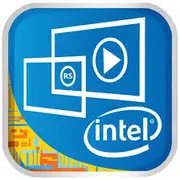Intel Core M-5Y70

인텔 코어 M-5Y70 2025년: 이 프로세서가 탑재된 노트북을 살 가치가 있을까?
소개: 초경량성의 우선순위
인텔 코어 M-5Y70은 2014년에서 2015년 사이에 출시된 프로세서로, 울트라북 시대의 상징이 되었습니다. 이 프로세서의 주요 특징은 최소한의 전력 소비(TDP 4.5W)와 패시브 쿨링입니다. 그러나 10년이 지난 2025년, 이 플랫폼에 기반한 장치를 고려할 가치가 있을까요? 세부 사항을 살펴보겠습니다.
아키텍처 및 공정: 컴팩트함이 성능을 희생하다
브로드웰의 특징
이 프로세서는 14nm 공정으로 제작된 인텔 코어의 5세대 마이크로 아키텍처인 브로드웰에 기반하고 있습니다. 이는 인텔이 초경량 장치를 위해 TDP 감소에 집중한 진화의 첫 시작입니다.
- 코어 및 스레드: 2코어, 4스레드(하이퍼스레딩). 기본 클럭은 1.1GHz, 터보 모드는 최대 2.6GHz입니다.
- 그래픽: 인텔 HD 그래픽스 5300(24 EU, 클럭 100-800MHz). DisplayPort를 통한 4K 지원.
- 캐시: L3 캐시 4MB.
이게 무슨 뜻인가요? 코어 M-5Y70은 출시 당시에도 높은 성능을 목표로 하지 않았습니다. 기본적인 작업을 수행할 수 있도록 하는 것이 주요 목적이었습니다.
전력 소비와 TDP: 침묵과 자율성
TDP 4.5W: 장단점
이처럼 낮은 열 패키지는 팬 없는 노트북을 만들 수 있게 했습니다. 예를 들어, 레노버 요가 3 프로 또는 애플 맥북 12"(2015)와 같은 제품이 유사한 접근 방식을 사용했습니다.
- 장점:
- 완전한 무소음.
- 경량 및 슬림한 바디.
- 단점:
- 장시간 부하 시 성능 제한(스로틀링).
중요: 2025년에는 인텔 코어 i5-1230U(9W)나 애플 M2(20W)와 같은 최신 프로세서의 TDP가 더 높지만, 이들의 효율성은 코어 M-5Y70을 능가합니다.
성능: 2025년 코어 M-5Y70은 어떤 능력을 발휘할까?
실제 사용 시나리오
- 오피스 작업:
- 문서 작업(워드, 엑셀), 브라우저(5~10탭) — 수용 가능하지만 백그라운드 앱 실행 시 약간의 지연 가능.
- 화상 회의(줌, 팀즈) — 기본 품질로 충분하지만 배경 필터는 사용 불가.
- 멀티미디어:
- 4K 스트리밍(유튜브, 넷플릭스) — 하드웨어 가속 덕분에 잘 수행됨.
- 사진 편집(라이트룸) — 가벼운 보정만 가능.
- 게임:
- 구형 게임(하프라이프 2, 마인크래프트 저사양) — 20-30 FPS.
- 최신 게임 — 비추천.
터보 부스트 모드: 짧은 부하 시 클럭이 2.6GHz로 상승하지만, 1-2분 후에는 스로틀링이 발생합니다. 예를 들어, 핸드브레이크에서 비디오 렌더링 시 12세대 코어 i5보다 3-4배 더 시간이 소요됩니다.
사용 시나리오: 코어 M-5Y70이 적합한 사람은 누구인가?
이상적인 대상
- 학생: 강의, 메모 및 PDF 작업을 위한 장치.
- 여행자: 8-10시간의 자율성을 가진 1-1.3kg의 경량 노트북.
- 보조 장치: 주 PC의 보조 장치로서 활용.
부적합한 경우:
- 게임 및 비디오 편집 사용자.
- 무거운 IDE 사용(안드로이드 스튜디오, 유니티).
예시: 코어 M-5Y70이 탑재된 델 XPS 13(2015)을 리퍼브 마켓에서 $150-$200에 찾을 수 있습니다. 그러나 $300-$400 범위 내에서 2023년 Intel N100 기반의 장치가 두 배의 성능을 제공합니다.
자율성: 배터리는 얼마나 버틸까?
에너지 절약 기술
- 인텔 스피드쉬프트: 저전력 모드로 신속한 전환을 위한 동적 주파수 관리.
- C-상태: 사용하지 않는 코어의 비활성화.
실제 결과:
- 웹 서핑 시 — 7-9시간(배터리 40-50Wh).
- 비디오 시청 시 — 최대 6시간.
팁: 2025년에는 이러한 장치의 배터리가 종종 노후화되므로 구매 전 상태를 확인하십시오.
경쟁사와의 비교: 무엇이 있었고 무엇이 있는가
2015년 유사 제품
- 인텔 코어 i5-5200U (브로드웰, 15W): 다중 스레드 작업에서 30-40% 더 빠르지만, 액티브 쿨링 필요.
- AMD A6-8500P (카리조-L, 15W): 단일 스레드 테스트에서 다소 약하지만, 그래픽이 더 우수함.
현대 대안(2025)
- 인텔 프로세서 N100 (알더 레이크-N, 6W): 4코어, 3.4GHz, TDP 6W. 코어 M-5Y70보다 2-3배 더 빠름.
- 애플 M1 (2020): 단일 스레드 성능이 3배, 다중 스레드는 6배 더 뛰어남.
결론: 코어 M-5Y70은 기본 작업에 대해서도 구식입니다. 그가 유효하게 사용될 수 있는 영역은 초저가 장치입니다.
장점과 단점: 가능성의 균형
강점
- 무소음 및 컴팩트 디자인.
- 4K 비디오 지원.
- 중고 시장에서 저렴한 가격.
약점
- 낮은 CPU 및 GPU 성능.
- 부하 시 스로틀링.
- 최신 표준(USB-C with Thunderbolt 4, Wi-Fi 6E) 지원 부족.
노트북 선택에 대한 추천
2025년에 주목할 점:
1. 장치 유형: 울트라북 또는 2-in-1 컨버터블. 게이밍 및 워크스테이션 피하기.
2. RAM: 최소 8GB. 4GB 모델(예: Asus UX305FA)은 이미 Windows 11에 적합하지 않음.
3. 스토리지: SSD만. HDD는 기본 작업도 늦출 수 있음.
4. 가격: 과도한 지출 피하기. 새로운 예산 노트북(예: HP 파빌리온 에어로 13, Ryzen 5 7530U)은 $500-$600에 현대적 기술 제공.
불행한 선택의 예: b급 맥북 12"(2015)를 $250에 구매하기. $100를 더 보태어 리퍼브된 아이패드 9 + 키보드를 구매하는 것이 더 낫다.
최종 결론: 코어 M-5Y70은 누구에게 적합할까?
이 프로세서는 다음을 원하는 사람들을 위한 선택입니다:
- 텍스트 및 인터넷을 위한 초저가 노트북.
- 조용한 작업을 위한 패시브 쿨링 장치.
- 여행을 위한 보조 장치.
2025년의 주요 이점:
- 가격 $200 이하.
- 교체된 배터리를 가진 오랜 신뢰성.
제약:
- 최신 OS의 높은 요구 사항(Windows 11, macOS 소노마)에 부적합.
결론: 향수인가 이성인가?
인텔 코어 M-5Y70은 울트라북 시대의 유물로, 2025년에는 예외적인 경우에만 유용합니다. 예산이 엄격히 제한되고 작업이 최소한이라면 고려할 수 있지만, 보다 편리한 작업을 위해서는 현대의 프로세서를 선택하는 것이 낫습니다. 기술은 끊임없이 발전하고 있으며, 오늘날 $300-$400에 코어 M-5Y70을 모든 면에서 초월하는 장치를 얻을 수 있습니다.
기초적인
CPU 사양
메모리 사양
GPU 사양
여러 가지 잡다한
벤치마크
다른 CPU와 비교
소셜 미디어에서 공유하기
또는 링크로 소개하기
<a href="https://cputronic.com/ko/cpu/intel-core-m-5y70" target="_blank">Intel Core M-5Y70</a>